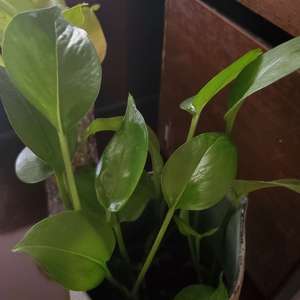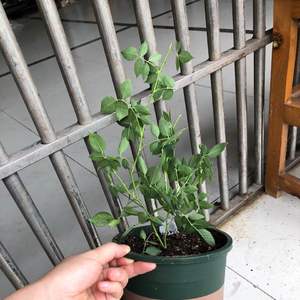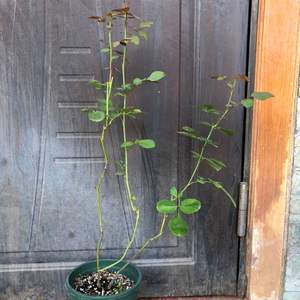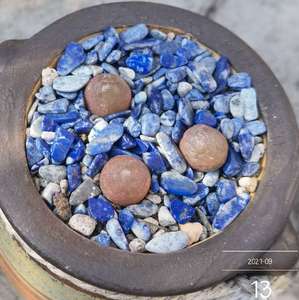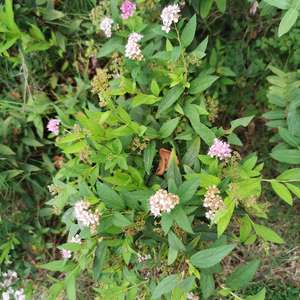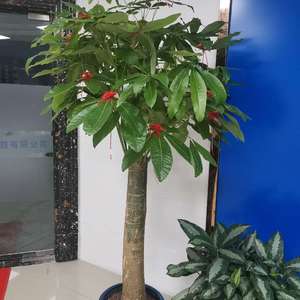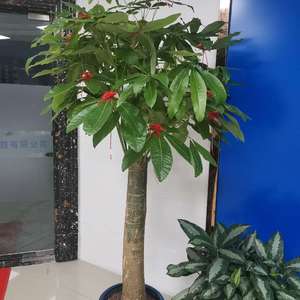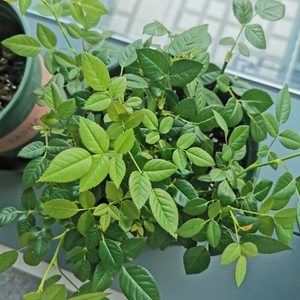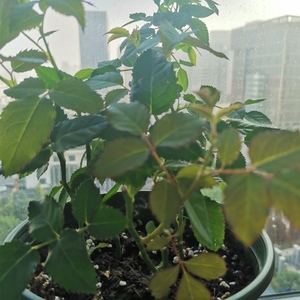文章
Miss Chen
2021年10月07日

Beefsteak tomatoes (Solanum lycopersicum "Beefsteak") are meaty, juicy fruits perfect for summer sandwiches or as sliced snacks with a sprinkle of sea salt. Large, thickly fleshed beefsteaks are the biggest type of tomatoes, weighing 1 pound or more. Growing quickly to at least 6 feet tall, the late-maturing tomato plant will produce a bountiful harvest in about 85 days. It needs a sturdy cage, trellis, or stake to support its fruit. Learn to grow and care for this abundant plant and welcome a plentiful harvest to your vegetable garden.
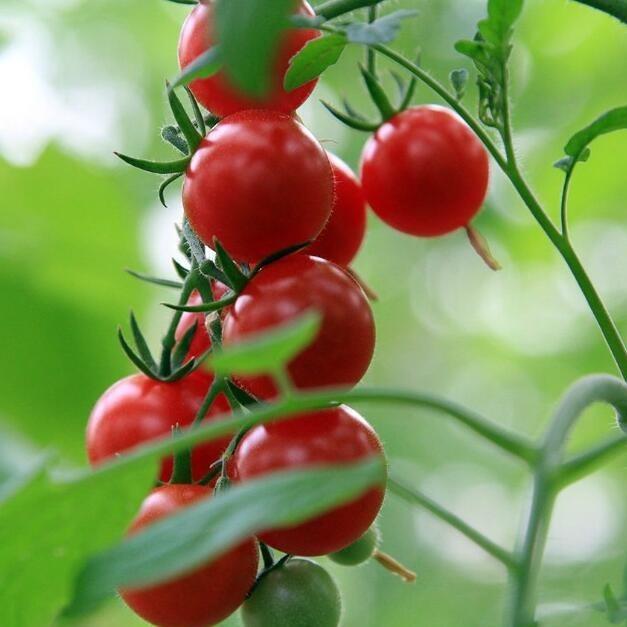
Botanical Name Solanum lycopersicum "Beefsteak"
Common Name Beefsteak Tomatoes
Plant Type Annual, vegetable
Mature Size 6 feet tall or more
Sun Exposure Full sun
Soil Type Fertile, well-drained
Soil pH Slightly acidic
Bloom Time Summer
Bloom Color Yellow
Hardiness Zones 2-11, USDA
Native Area Central and South America
Toxicity Foliage (not fruit) is toxic to humans and some pets
FEATURED VIDEO
How to Grow and Care for a Peperomia Plant
Beefsteak Tomato Care and Trellising
Space tomato plants at least 18 to 36 inches apart. Beefsteak varieties are especially tall and require lots of space and training. For optimal growth and air circulation, space 5 feet or more apart. Tie the plant to a trellis, stake, or cage. They usually grow too tall for a typical tomato cage, so they will need extra support as their baseball-sized fruit can be quite heavy.
Dig a 10- to 12-inch deep hole for each plant and consider using a post-hole digger. Establish a post or stake down the center of the row between the two end posts at each end of the row if end posts are more than 20 feet apart. Posts that are 3 inches in diameter and 6 feet tall are ideal. Replace the dirt and pack it in firmly so that the posts do not fall over.
Wrap a 12-gauge wire around the top of one end post about 6 feet above the soil surface. Nail or staple the end of the wire to the post. Stretch the wire to make it taut, extend it to the next post, and keep the post anchored in place. Tie a second wire between the posts about 12 inches above the ground.
Tie twine to the bottom wire and stretch it to the top wire. Tie the other end to the top. Attach any additional lengths of twine for each plant and space the twine 36 inches apart on the length of the trellis.
Once the trellis system is ready, plant a seedling at the base of each length of twine. Plant each seedling deeper than it was growing in its starter pot. Establish deep enough so that the bottom leaf is just above the soil surface. Do this by planting it straight into the soil or sideways to encourage healthy rooting. Beefsteaks thrive most if planted deeper in the ground rather than being planted in containers.
As the plant grows, you should prune it regularly. As side branches form on the main stem, pinch out "suckers" or new growth when they are young and only 1/2 inch long that form in the crotch of the stronger branches. Do this weekly throughout the growing season to ensure that the plant develops no more than one or two main stems. This will make it easier for the plant to grow on the trellis, and it will slow upward growth and promote better branching. As the stem grows, wrap it around the twine in the same direction each time. Handle the stem carefully so that it doesn't break.
Light
Give beefsteak tomatoes full, direct sunlight 8 hours or more per day. Make sure no shadows are cast by nearby buildings or trees. For best results, grow them on a slight slope with southern or southeastern exposure. A well-drained raised garden bed is especially good in cooler climates because it will warm early in the season.
Soil
As for all tomato plants, provide beefsteaks with well-drained fertile soil that is high in organic matter. Fertile clay and loam produce high yields, while lighter soils drain and warm quickly and will produce earlier harvests. Maintain a pH between 6.0 and 6.8. Keep the bed weeded, and mulch between rows of tomatoes to prevent weed overgrowth and to conserve moisture. Black plastic mulch will warm the soil and radiate heat.
Water
After planting, water immediately to moisten and settle the soil. Throughout the growing season, keep tomatoes consistently watered, especially as they begin to fruit. Moisture will prevent fruits from cracking and encourage deep rooting. If it rains less than one inch in a week, be sure to water them well. They will need one to two inches of water weekly. Never let the foliage begin to wilt.
Fertilizer
Before planting, work in compost or other organic amendments. Fertilize plants every three weeks with 1 pound per 100 square feet. Ideal NPK ratios are 8-32-16 or 6-24-24. For smaller gardens, use about one to two level tablespoons of fertilizer per plant every three weeks.
Temperature and Humidity
Plant tomatoes when temperatures are above 55 degrees Fahrenheit or ideally above 60 degrees. Since they are warm-weather crops, even a light frost can damage plants. In the event of a potential frost or temperature dip, cover the plants with a frost blanket.
Growing from Seed
Many beefsteak tomato varieties take at least 85 days to harvest. Since this is not possible in much of the United States, it's best to start your own seedlings. Start seedlings indoors six to eight weeks before the first frost of spring when they will be ready to transplant. To extend the fruit-producting season, especially in the southern states, start a second planting of seeds about two or three weeks later. Sow seeds in flats and care for them until they are at least 8 inches tall. Then harden off the seedlings and transplant them after the last spring frost. Your local Cooperative Extension Service can advise you on planting times in your growing zone.

Varieties of Beefsteak Tomato
Beefsteak varieties produce fruits in many colors, including red/burgundy, gold/yellow, green, orange, pink, purple/lavender, and variegated. 'Beefmaster,' 'Big Beef,' and 'Big Boy' are among the most popular and easy to find varieties that have adapted to southern heat. 'Mortgage Lifter' and 'Grosse Lisse' are good choices for very humid areas. if you enjoy heirloom varieties, try 'Red Brandywine', 'Pruden's Purple Tomato', also known as 'Prudence', or 'Chocolate Stripes'.
Common Pests and Diseases
All beefsteak tomato varieties are prone to various diseases and pests. Watch closely for any issues and take care of them as soon as possible. Some common pests are tomato hornworms, aphids, rodents such as squirrels, and flea beetles. Humid weather may cause fungal diseases like early blight and late blight.
To remove any aphids, apply a warm stream of water. You can also handpick and destroy beetles, eggs, and larvae. To protect plants from early flea beetle damage, use row covers. To prevent fungal diseases and blossom end rot, water early in the day at the base of the plant, not overhead, and maintain consistent moisture while avoiding waterlogging the soil. Weeding around beefsteak will also encourage good air circulation. Moving forward, the best way to prevent many of these issues is to practice proper crop rotation.

Botanical Name Solanum lycopersicum "Beefsteak"
Common Name Beefsteak Tomatoes
Plant Type Annual, vegetable
Mature Size 6 feet tall or more
Sun Exposure Full sun
Soil Type Fertile, well-drained
Soil pH Slightly acidic
Bloom Time Summer
Bloom Color Yellow
Hardiness Zones 2-11, USDA
Native Area Central and South America
Toxicity Foliage (not fruit) is toxic to humans and some pets
FEATURED VIDEO
How to Grow and Care for a Peperomia Plant
Beefsteak Tomato Care and Trellising
Space tomato plants at least 18 to 36 inches apart. Beefsteak varieties are especially tall and require lots of space and training. For optimal growth and air circulation, space 5 feet or more apart. Tie the plant to a trellis, stake, or cage. They usually grow too tall for a typical tomato cage, so they will need extra support as their baseball-sized fruit can be quite heavy.
Dig a 10- to 12-inch deep hole for each plant and consider using a post-hole digger. Establish a post or stake down the center of the row between the two end posts at each end of the row if end posts are more than 20 feet apart. Posts that are 3 inches in diameter and 6 feet tall are ideal. Replace the dirt and pack it in firmly so that the posts do not fall over.
Wrap a 12-gauge wire around the top of one end post about 6 feet above the soil surface. Nail or staple the end of the wire to the post. Stretch the wire to make it taut, extend it to the next post, and keep the post anchored in place. Tie a second wire between the posts about 12 inches above the ground.
Tie twine to the bottom wire and stretch it to the top wire. Tie the other end to the top. Attach any additional lengths of twine for each plant and space the twine 36 inches apart on the length of the trellis.
Once the trellis system is ready, plant a seedling at the base of each length of twine. Plant each seedling deeper than it was growing in its starter pot. Establish deep enough so that the bottom leaf is just above the soil surface. Do this by planting it straight into the soil or sideways to encourage healthy rooting. Beefsteaks thrive most if planted deeper in the ground rather than being planted in containers.
As the plant grows, you should prune it regularly. As side branches form on the main stem, pinch out "suckers" or new growth when they are young and only 1/2 inch long that form in the crotch of the stronger branches. Do this weekly throughout the growing season to ensure that the plant develops no more than one or two main stems. This will make it easier for the plant to grow on the trellis, and it will slow upward growth and promote better branching. As the stem grows, wrap it around the twine in the same direction each time. Handle the stem carefully so that it doesn't break.
Light
Give beefsteak tomatoes full, direct sunlight 8 hours or more per day. Make sure no shadows are cast by nearby buildings or trees. For best results, grow them on a slight slope with southern or southeastern exposure. A well-drained raised garden bed is especially good in cooler climates because it will warm early in the season.
Soil
As for all tomato plants, provide beefsteaks with well-drained fertile soil that is high in organic matter. Fertile clay and loam produce high yields, while lighter soils drain and warm quickly and will produce earlier harvests. Maintain a pH between 6.0 and 6.8. Keep the bed weeded, and mulch between rows of tomatoes to prevent weed overgrowth and to conserve moisture. Black plastic mulch will warm the soil and radiate heat.
Water
After planting, water immediately to moisten and settle the soil. Throughout the growing season, keep tomatoes consistently watered, especially as they begin to fruit. Moisture will prevent fruits from cracking and encourage deep rooting. If it rains less than one inch in a week, be sure to water them well. They will need one to two inches of water weekly. Never let the foliage begin to wilt.
Fertilizer
Before planting, work in compost or other organic amendments. Fertilize plants every three weeks with 1 pound per 100 square feet. Ideal NPK ratios are 8-32-16 or 6-24-24. For smaller gardens, use about one to two level tablespoons of fertilizer per plant every three weeks.
Temperature and Humidity
Plant tomatoes when temperatures are above 55 degrees Fahrenheit or ideally above 60 degrees. Since they are warm-weather crops, even a light frost can damage plants. In the event of a potential frost or temperature dip, cover the plants with a frost blanket.
Growing from Seed
Many beefsteak tomato varieties take at least 85 days to harvest. Since this is not possible in much of the United States, it's best to start your own seedlings. Start seedlings indoors six to eight weeks before the first frost of spring when they will be ready to transplant. To extend the fruit-producting season, especially in the southern states, start a second planting of seeds about two or three weeks later. Sow seeds in flats and care for them until they are at least 8 inches tall. Then harden off the seedlings and transplant them after the last spring frost. Your local Cooperative Extension Service can advise you on planting times in your growing zone.

Varieties of Beefsteak Tomato
Beefsteak varieties produce fruits in many colors, including red/burgundy, gold/yellow, green, orange, pink, purple/lavender, and variegated. 'Beefmaster,' 'Big Beef,' and 'Big Boy' are among the most popular and easy to find varieties that have adapted to southern heat. 'Mortgage Lifter' and 'Grosse Lisse' are good choices for very humid areas. if you enjoy heirloom varieties, try 'Red Brandywine', 'Pruden's Purple Tomato', also known as 'Prudence', or 'Chocolate Stripes'.
Common Pests and Diseases
All beefsteak tomato varieties are prone to various diseases and pests. Watch closely for any issues and take care of them as soon as possible. Some common pests are tomato hornworms, aphids, rodents such as squirrels, and flea beetles. Humid weather may cause fungal diseases like early blight and late blight.
To remove any aphids, apply a warm stream of water. You can also handpick and destroy beetles, eggs, and larvae. To protect plants from early flea beetle damage, use row covers. To prevent fungal diseases and blossom end rot, water early in the day at the base of the plant, not overhead, and maintain consistent moisture while avoiding waterlogging the soil. Weeding around beefsteak will also encourage good air circulation. Moving forward, the best way to prevent many of these issues is to practice proper crop rotation.
0
0
文章
Miss Chen
2021年08月13日

Black chokeberry (Aronia melanocarpa) is a deciduous shrub that is native to the eastern part of North America. It grows in an upright and fairly rounded shape. Its glossy, dark green leaves are around 1 to 3 inches long and either lanceolate or elliptical in shape. The foliage turns red to reddish-purple in the fall, providing striking color to the landscape before dropping off the plant for winter. Clusters of small five-petaled flowers appear in the spring, and purplish-black to black fruits that are around the size of blueberries appear in the late summer to fall. Black chokeberry has a slow to moderate growth rate and can be planted in the fall or spring.

Botanical Name Aronia melanocarpa
Common Names Black chokeberry, aronia berry, aronia, chokeberry
Plant Type Shrub
Mature Size 3–6 ft. tall and wide
Sun Exposure Full, partial
Soil Type Well-drained
Soil pH Acidic
Bloom Time Spring
Flower Color White
Hardiness Zone 3–8 (USDA)
Native Area North America
Black Chokeberry Care
This shrub is highly adaptable and hardy. It can grow well in both moist and dry locations. Plus, ideally the soil pH should be acidic, but it can also grow in alkaline soil. And while it prefers soil that drains well, it is also tolerant of boggy soil. You can take advantage of the adaptability of black chokeberry when deciding how to use it in the landscape. For example, its tolerance of boggy soil makes it an excellent choice for wet areas where many other plants refuse to grow.
Because black chokeberry is so tolerant to many different growing conditions, it also tends to readily spread in the landscape. If you don't want multiple shrubs forming a thicket, you will have to monitor for and remove suckers around the base of the plant from which new plants with grow. Other than that, maintenance is very low for this shrub, as it will mostly take care of itself. It also generally doesn't have any major problems with pests or diseases. Plan to water during dry spells and prune annually to maintain its shape.
Light
You can plant a black chokeberry shrub in either full sun or partial shade. But you will get the best flowering and fruiting in locations with full sun, meaning at least six hours of direct sunlight on most days. In too much shade, the shrub will likely only minimally flower and fruit, and it will produce weak growth that ultimately could kill the plant.
Soil
A virtue of this shrub is how adaptable it is to a wide range of soils. It can tolerate both sandy and clay soil, though it prefers to grow in something in between those two. It also can handle some salt in the soil, making it a good option for a site near roadways that use road salt.
Water
Black chokeberry has moderate water needs. It can tolerate both the occasional drought and occasional flooding. But during prolonged dry spells and during particularly hot weather, it is ideal to give your shrub some water.
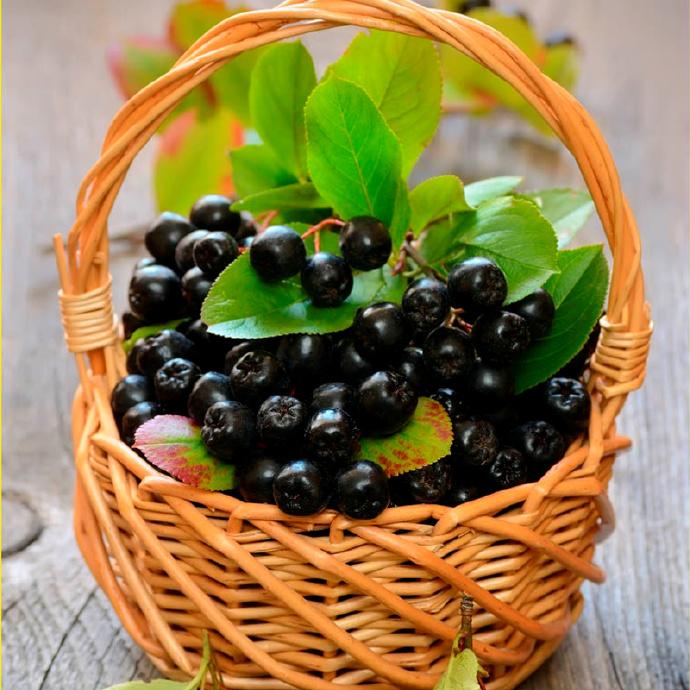
Temperature and Humidity
Black chokeberry has good tolerance for both the cold and hot temperatures of its growing zones. It flowers fairly late in the spring to avoid frost. But if there happens to be a late frost, this can damage the blooms and affect later fruiting for that growing season. So if your area does expect frost when your shrub is in bloom, consider covering the shrub with a sheet to protect it. Moreover, humidity typically isn’t an issue for the shrub as long as there is good air circulation around the foliage to prevent fungal diseases.
Fertilizer
Black chokeberry likely won't need supplemental fertilization unless you have nutrient-deficient soil. You can mix compost into the soil when you plant your shrub to give its growth a boost. Then, each spring apply a light layer of compost for continued healthy growth.
Black Chokeberry Varieties
There are several varieties of black chokeberry that vary slightly in appearance, including:
‘Autumn Magic’: This shrub has a more compact growth habit than the main species plant but with large clusters of fruit.
‘Iroquois Beauty’: This variety also has a compact growth habit and features particularly vivid fall color.
‘Viking’: This variety is known for its large black fruit and also sports vivid fall color.
‘McKenzie’: This is a tall variety that can grow up to 12 feet.
Pruning
Besides removing suckers around the base of the shrub as needed to prevent unwanted new shrubs from growing, pruning will not be an extensive chore for the black chokeberry shrub. After the plant is done flowering in the spring, lightly prune the stems to shape the shrub to your liking. Also, remove any dead, damaged, or diseased portions of the shrub as you spot them.

Botanical Name Aronia melanocarpa
Common Names Black chokeberry, aronia berry, aronia, chokeberry
Plant Type Shrub
Mature Size 3–6 ft. tall and wide
Sun Exposure Full, partial
Soil Type Well-drained
Soil pH Acidic
Bloom Time Spring
Flower Color White
Hardiness Zone 3–8 (USDA)
Native Area North America
Black Chokeberry Care
This shrub is highly adaptable and hardy. It can grow well in both moist and dry locations. Plus, ideally the soil pH should be acidic, but it can also grow in alkaline soil. And while it prefers soil that drains well, it is also tolerant of boggy soil. You can take advantage of the adaptability of black chokeberry when deciding how to use it in the landscape. For example, its tolerance of boggy soil makes it an excellent choice for wet areas where many other plants refuse to grow.
Because black chokeberry is so tolerant to many different growing conditions, it also tends to readily spread in the landscape. If you don't want multiple shrubs forming a thicket, you will have to monitor for and remove suckers around the base of the plant from which new plants with grow. Other than that, maintenance is very low for this shrub, as it will mostly take care of itself. It also generally doesn't have any major problems with pests or diseases. Plan to water during dry spells and prune annually to maintain its shape.
Light
You can plant a black chokeberry shrub in either full sun or partial shade. But you will get the best flowering and fruiting in locations with full sun, meaning at least six hours of direct sunlight on most days. In too much shade, the shrub will likely only minimally flower and fruit, and it will produce weak growth that ultimately could kill the plant.
Soil
A virtue of this shrub is how adaptable it is to a wide range of soils. It can tolerate both sandy and clay soil, though it prefers to grow in something in between those two. It also can handle some salt in the soil, making it a good option for a site near roadways that use road salt.
Water
Black chokeberry has moderate water needs. It can tolerate both the occasional drought and occasional flooding. But during prolonged dry spells and during particularly hot weather, it is ideal to give your shrub some water.

Temperature and Humidity
Black chokeberry has good tolerance for both the cold and hot temperatures of its growing zones. It flowers fairly late in the spring to avoid frost. But if there happens to be a late frost, this can damage the blooms and affect later fruiting for that growing season. So if your area does expect frost when your shrub is in bloom, consider covering the shrub with a sheet to protect it. Moreover, humidity typically isn’t an issue for the shrub as long as there is good air circulation around the foliage to prevent fungal diseases.
Fertilizer
Black chokeberry likely won't need supplemental fertilization unless you have nutrient-deficient soil. You can mix compost into the soil when you plant your shrub to give its growth a boost. Then, each spring apply a light layer of compost for continued healthy growth.
Black Chokeberry Varieties
There are several varieties of black chokeberry that vary slightly in appearance, including:
‘Autumn Magic’: This shrub has a more compact growth habit than the main species plant but with large clusters of fruit.
‘Iroquois Beauty’: This variety also has a compact growth habit and features particularly vivid fall color.
‘Viking’: This variety is known for its large black fruit and also sports vivid fall color.
‘McKenzie’: This is a tall variety that can grow up to 12 feet.
Pruning
Besides removing suckers around the base of the shrub as needed to prevent unwanted new shrubs from growing, pruning will not be an extensive chore for the black chokeberry shrub. After the plant is done flowering in the spring, lightly prune the stems to shape the shrub to your liking. Also, remove any dead, damaged, or diseased portions of the shrub as you spot them.
0
0
成长记
花花の世界
2021年08月03日

8月1日40度高温换盆换土,缓苗两天后生长正常。
配土:中弗农营养土、厨余落叶、尿素沤制1个月并过筛,盆底放粗颗粒,中部放中等颗粒,上部为富含营养的团粒结构细土。土表上再覆盖上野草,给土壤中有益真菌做植物,同时土壤保墒。
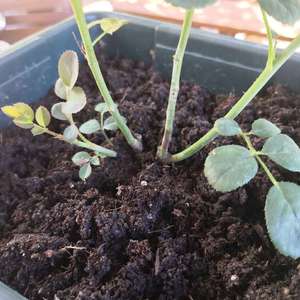
配土:中弗农营养土、厨余落叶、尿素沤制1个月并过筛,盆底放粗颗粒,中部放中等颗粒,上部为富含营养的团粒结构细土。土表上再覆盖上野草,给土壤中有益真菌做植物,同时土壤保墒。

0
0
成长记
花花の世界
2021年06月12日

扦插了7棵,成功4颗,1颗黑杆,2颗未发根
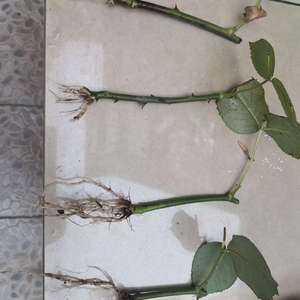

0
0
花花の世界:@野原新之助× 那有可能是扦插时没有做好杀菌。我扦插时要用打火机将采集插穗的剪刀进行消毒,插穗放到多菌灵溶液中浸泡2个小时,扦插完成后浇透水,然后将泡插穗的多菌灵溶液全部倒入扦插基质中再次对基质进行消毒。
希望对你帮助。
野原新之助×:想问问怎么扦插,我扦插几次了,一次没成功,全黑了😭😭😭😭😭😭




